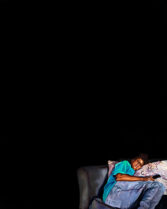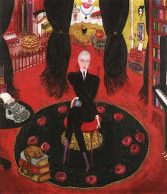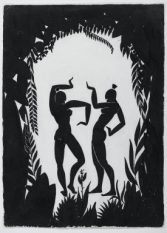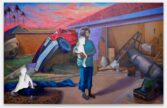
Author: Rob Perrée
The Harlem Renaissance at 100. Part 2: Carl van Vechten

The Harlem Renaissance was a revival of black culture in a black district of New York. Yet there was a white critic, writer and photographer who had a great influence on the effectuation of that wave of creativity and pride. That was Carl van Vechten. He was appreciated and hated. He brought black writers into contact with white lenders and publishers so that their books could be published. He himself wrote a novel, Nigger Heaven, which for his title and his insight in the decadent nightlife of Harlem was filleted by many Harlemites.
In this article Rob Perrée gives a portrait of this controversial dandy.
Portrait of Van Vechten by Florine Stettheimer (1922)
First published: Nov 1 2018. Because of the Harlem Renaissance exhibtion in The Met in New York we publish this essay again.
The Harlem Renaissance at 100: as black as it was gay

Around 1918, at the end of the First World War, an unprecedented cultural revival took place in Harlem. It made history and was known as the Harlem Renaissance. Writers, poets, artists, musicians, actors and theorists proudly showed what the New Negro was capable of. For the first time, African Americans felt valued and respected.
Much about that important period in black history has been published. For a long time, however, it was concealed that many of the Harlem Renaissance tastemakers were gay. It was thought that making that public would undermine the euphoria.



